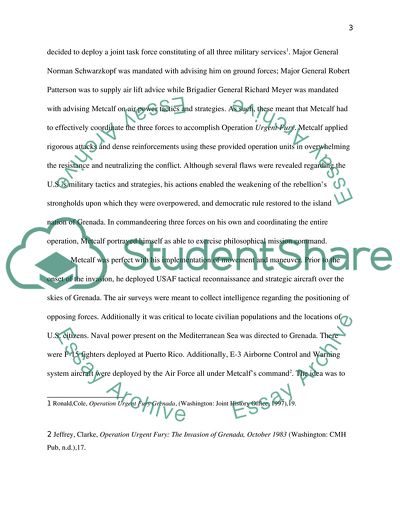Cite this document
(Operation Urgent Fury: The Invasion of Grenada Report Example | Topics and Well Written Essays - 2000 words, n.d.)
Operation Urgent Fury: The Invasion of Grenada Report Example | Topics and Well Written Essays - 2000 words. https://studentshare.org/history/1850555-operation-urgent-fury
Operation Urgent Fury: The Invasion of Grenada Report Example | Topics and Well Written Essays - 2000 words. https://studentshare.org/history/1850555-operation-urgent-fury
(Operation Urgent Fury: The Invasion of Grenada Report Example | Topics and Well Written Essays - 2000 Words)
Operation Urgent Fury: The Invasion of Grenada Report Example | Topics and Well Written Essays - 2000 Words. https://studentshare.org/history/1850555-operation-urgent-fury.
Operation Urgent Fury: The Invasion of Grenada Report Example | Topics and Well Written Essays - 2000 Words. https://studentshare.org/history/1850555-operation-urgent-fury.
“Operation Urgent Fury: The Invasion of Grenada Report Example | Topics and Well Written Essays - 2000 Words”. https://studentshare.org/history/1850555-operation-urgent-fury.


